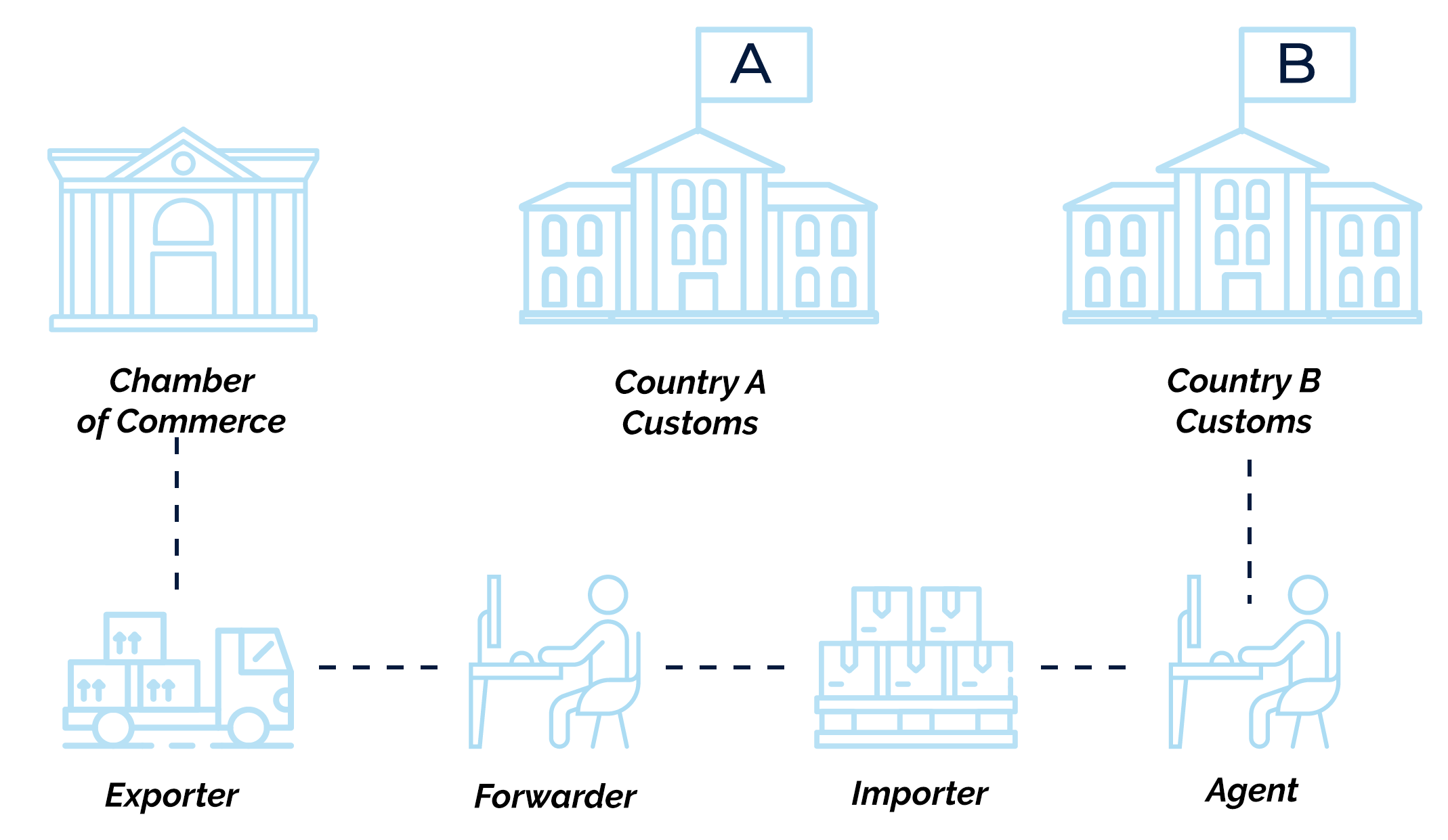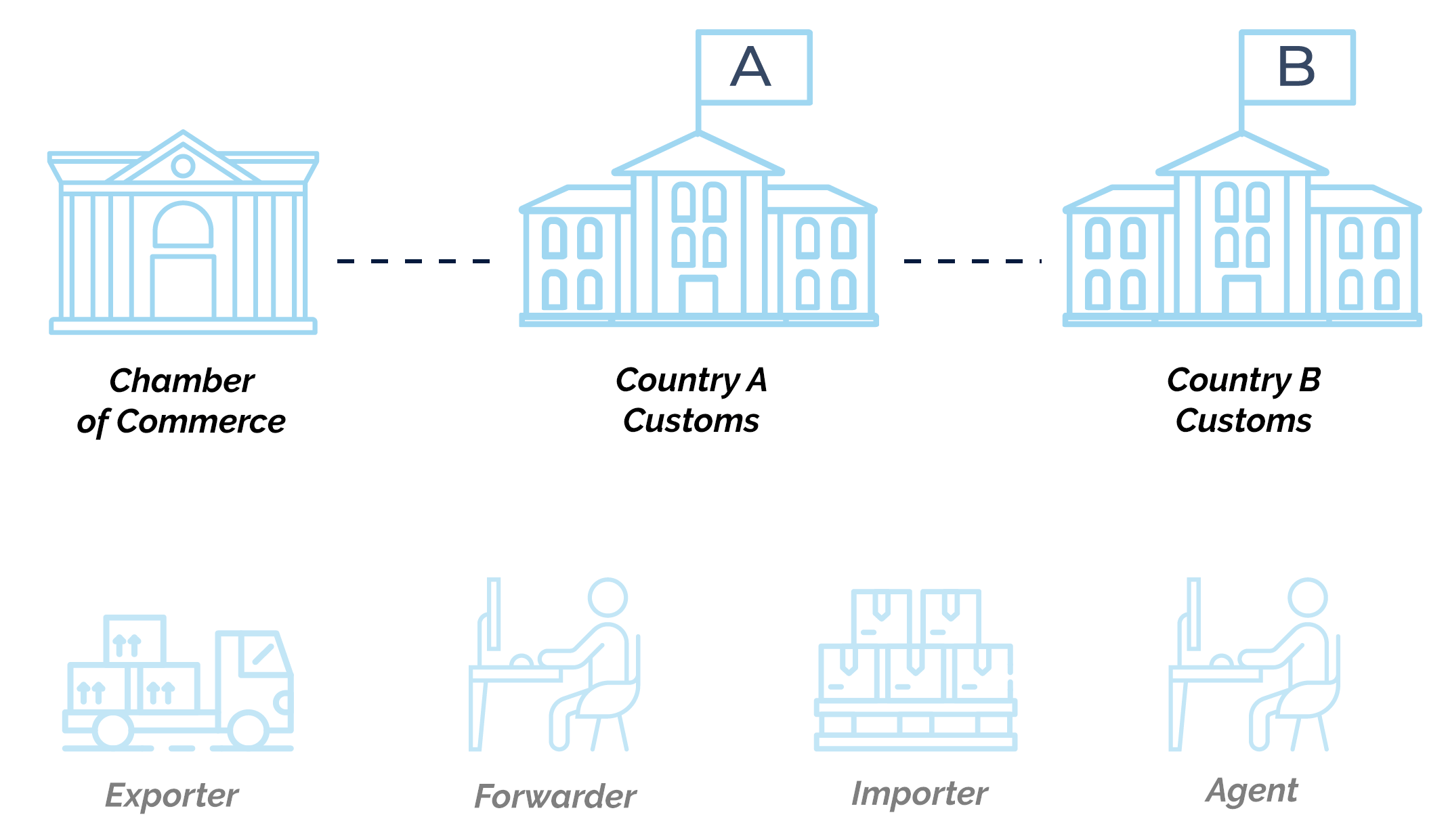THE COST OF TRADE IS HIGH
A country's "cost of trade" is a broad measure that relates the cost of goods in cross border trade to the cost of the same goods in domestic trade. UNCTAD and the World Bank have developed a country level database and some helpful explanatory material.
The global average cost of trade is about 100% for manufactured goods and over 150% for agricultural goods. Less than 10% of that is duty. Around 45% is distributor mark up and about 20% is actual shipping costs. The remaining 25% or so is non-tarriff border costs, part of which is traceable to complex paper based cross-border processes which are imposing a handbrake on the global economy of at least 1 trillion dollars annually.
Although many countries have achieved a high degree of digitisation at a national level through initiatives such as trade single windows, most cross-border processes are still paper based. Thats because there's no direct trust relationship between an issuer of a paper document in the exporting country and the customs authority in the importing country.
SOLUTION: THE INTER GOVERNMENT LEDGER
The UN/CEFACT inter-government ledger (IGL) protocol is desinged to digitise all cross-border paperwork. ICL is essentially a high integrity trust proxy - the importing regulator trusts the digital document because the exporting regulator has verified it. The IGL leverages distributed ledger technology (eg blockchain) in order to assure the integrity of the network and also to avoid the need for any shared infrastructure. Each country hosts it's documents in it's own secure repository and shares them with other countries via the ledger
Read more about IGL and keep yourself updated via the IGL team collaboration site
AN EXAMPLE - CERTIFICATES OF ORIGIN
A certificate of origin is issued by a chamber of commerce and is used to assert compliance with the terms of a free trade agreement. Currently it’s a paper document that changes hands at least 6 times in support of one consignment.

But, using IGL, a digital certificate of origin is forwarded directly to the importing regulator and a near real time acknowledgement gives the exporter confidence that the regulator has accepted the certificate validity.

AN IMPLEMENTATION: TRUSTBRIDGE
Since the UN/CEFACT IGL project launch in March 2019 in Geneva, delegates from multiple countries including China, India, Australia, Singapore and the Netherlands have joined the project team to develop the standard protocol. Momentum is building. However, couintries that wish to join an IGL network must build and deploy their national IGL node. Trustbridge is an open source implementation that is designed to facilite adoption. TrustBridge is a multi-channel implementation - meaning that you are not locked into any specific distributed ledger technology or network. We expect that the IGL protocol will be supported by many different technologies and so Trustbridge gives you the flexibility to plug into any of them.
The initial contribution to Trustbridge was provided by the Australian Border Force
Read the technical docs, access the software or raise a ticket to provide feedback or contact us